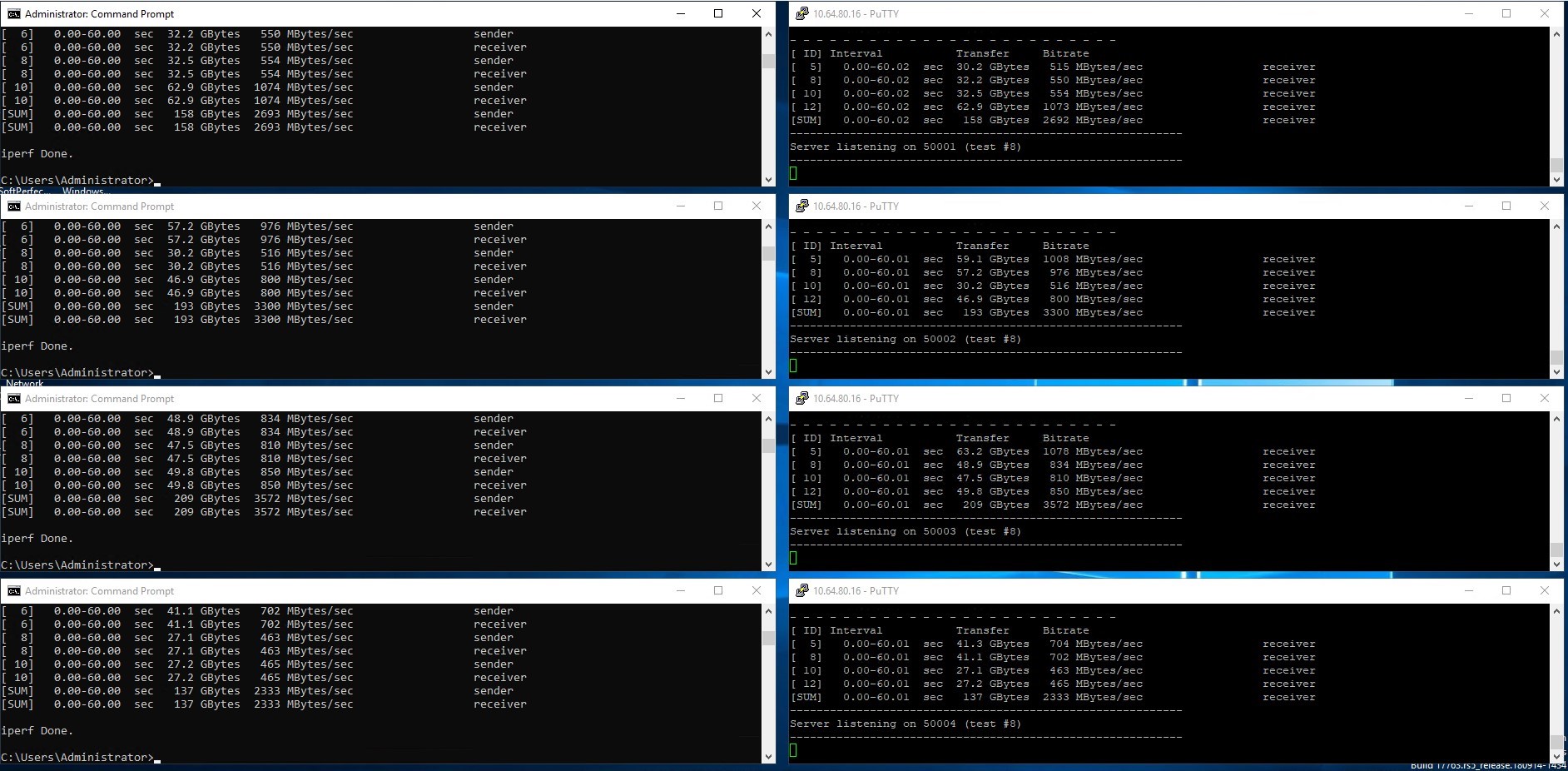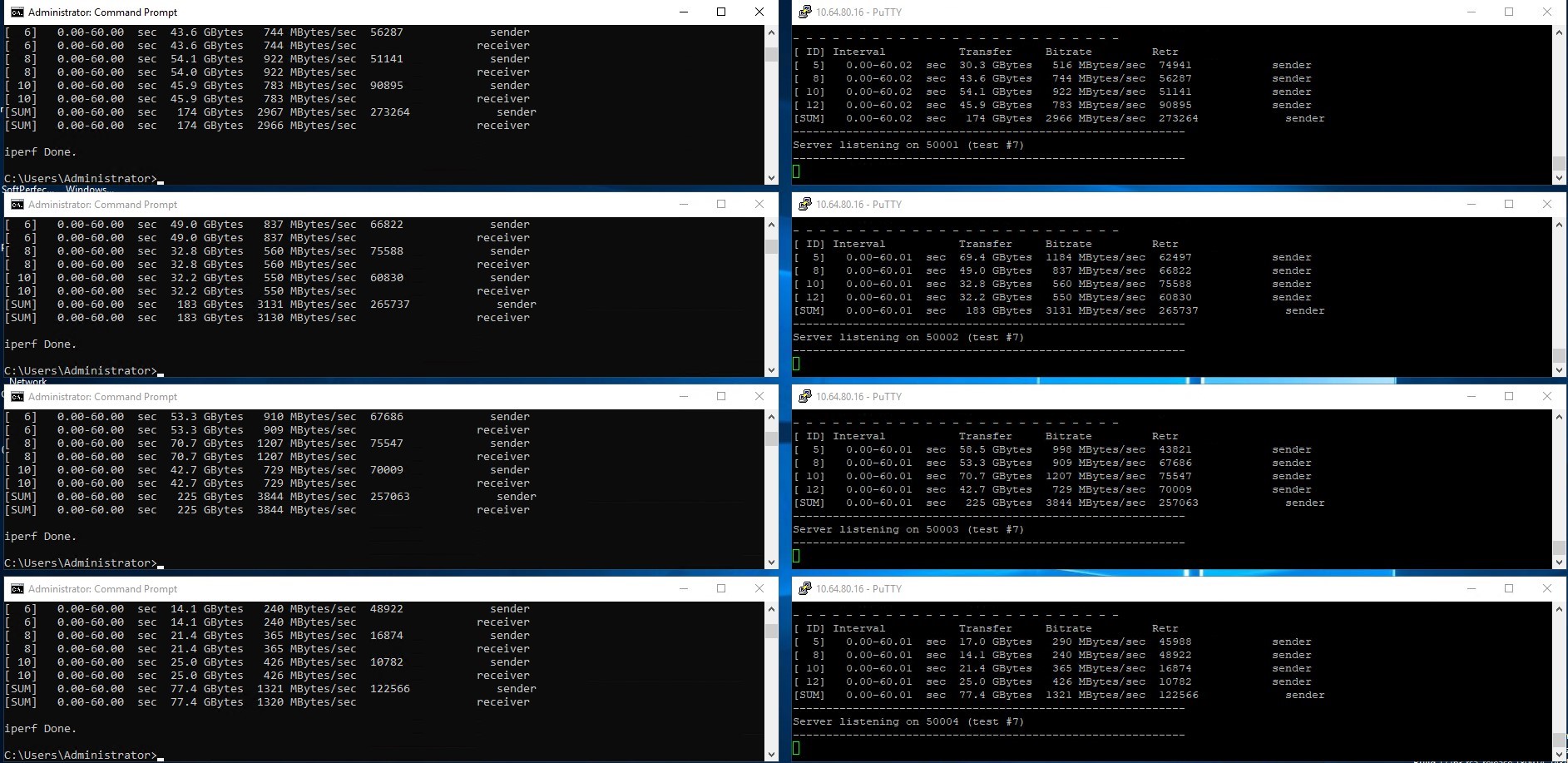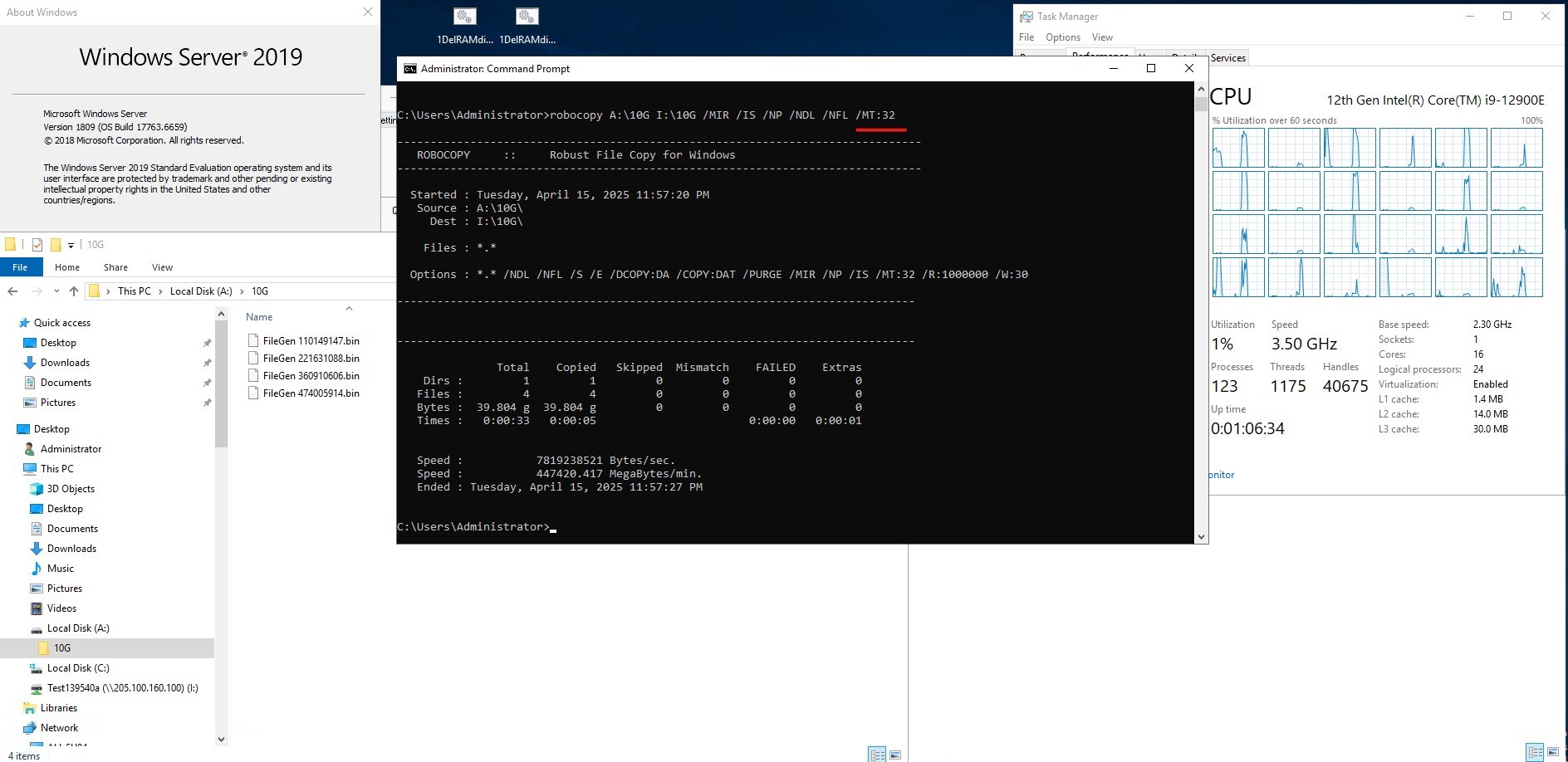Best practices for testing 100GbE network performance on QNAP NAS?
Last modified date:
2025-07-04
Applicable Products
QNAP 100GbE Networking with QNAP NAS
Best Practice
Hardware Requirements
- Clients:
- PCIe Gen3 x16 or Gen4 x8 slot
- High-performance CPU with strong single-core frequency.
- Adequate system memory to handle high throughput.
- High-speed storage solution or RAM disk for accurate throughput testing.
- NAS:
- PCIe Gen3 x16 or Gen4 x8 slot for NIC
- Validate disk model performance
- Cards, Cable and the GBIC:
- 100GbE card and the GBIC are in the compatibility list for the NAS model.
- QSFP cables (4-lane combined) compatible with 100Gb networks.
Environment Setup
- Install Correct Network Drivers both PC and NAS:
- PC Side Configuration
- Set MTU to 9000.
- Disable Interrupt Moderation.(particularly on Windows).
- Check disk I/O capability.
Info
If your NAS is offline, download the ‘Advanced Network Driver’ package from QNAP’s official driver center and install it manually.
- NAS Side Configuration
- Set MTU to 9000.
- Use ifconfig to check TX/RX errors.
- Ensure SAMBA advanced setting > KSMBD and AIO are enabled
- Ensure that snapshots and encrypted volumes/shares are disabled.
- Without SED pool
- CPU Performance Monitoring
- During performance tests, closely monitor CPU utilization using tools such as top or htop.
- If any single CPU core exhibits sustained high usage (approaching 100%), it indicates a CPU bottleneck. This means the CPU is insufficiently powerful for 100Gb network testing.
Info
Upgrade to a higher-performance CPU with greater single-core frequency to continue accurate testing.
Networking test with iperf3
Warning
Single-threaded or single-process tests typically will not achieve maximum 100Gb network performance.
- Multi-process Test Methodology
- On NAS (server-side):
- Open multiple iperf3 server SSH consoles with each port:
- On NAS (server-side):
iperf3 -s -f M -p 50001 & iperf3 -s -f M -p 50002 & iperf3 -s -f M -p 50003 & iperf3 -s -f M -p 50004 &- After testing complete
killall iperf3- On Client Side:
- Conduct tests with multiple parallel processes to fully utilize the 100Gb bandwidth
- Linux example:
- Conduct tests with multiple parallel processes to fully utilize the 100Gb bandwidth
iperf3 -c <IP> -f M -i 1 -P 4 -t 60 -p 50001 & iperf3 -c <IP> -f M -i 1 -P 4 -t 60 -p 50002 & iperf3 -c <IP> -f M -i 1 -P 4 -t 60 -p 50003 & iperf3 -c <IP> -f M -i 1 -P 4 -t 60 -p 50004 &- Windows batch script:
@echo off
start "iperf3-50001" cmd /k "iperf3.exe -c <ip> -f M -i 1 -t 60 -P 1 -p 50001"
start "iperf3-50002" cmd /k "iperf3.exe -c <ip> -f M -i 1 -t 60 -P 1 -p 50002"
start "iperf3-50003" cmd /k "iperf3.exe -c <ip> -f M -i 1 -t 60 -P 1 -p 50003"
start "iperf3-50004" cmd /k "iperf3.exe -c <ip> -f M -i 1 -t 60 -P 1 -p 50004"
echo press any key to close
pause >nul- iperf3 example:
- Write speed=2692+3300+3572+2333=11897 MB/s

- Read speed = 2966+3130+3844+1320 = 11260 MB/s

File System Testing
- FIO for Linux:
fio --filename=Test1 --direct=1 --rw=write --bs=1M --ramp_time=10 --runtime=60 --name=test-write --ioengine=libaio --iodepth=32 --numjobs=32 --size=100G
fio --filename=Test2 --direct=1 --rw=read --bs=1M --ramp_time=10 --runtime=60 --name=test-read --ioengine=libaio --iodepth=32 --numjobs=32 --size=100GFIO for Windows
fio --filename=fio.dat --rw=write --bs=1M --ramp_time=10 --runtime=60 --name=test-write --ioengine=windowsaio --iodepth=32 --numjobs=32 --size=100G
fio --filename=fio.dat --rw=read --bs=1M --ramp_time=10 --runtime=60 --name=test-read --ioengine=windowsaio --iodepth=32 --numjobs=32 --size=100G --fallocate=noneInfo
Windows File Explorer and Robocopy using single thread with limited performance.
- Windows File Explorer:
- File Browser = single-thread
- Write performance improves with multi-process copying.
- Reading limited by CPU core
- Robocopy:
- Write Performance
- PowerShellPowerShell
robocopy A:\10G I:\10G /MIR /IS /NP /NDL /NFL /MT:32  Write Performance = 7819298321 Bytes/sec = 7453 MB/s
Write Performance = 7819298321 Bytes/sec = 7453 MB/s- Robocopy has limitation in read performance.
Checklist by layers:
- Hardware connection and Interface checking.
- Checked Hardware supported 100Gb
- Checked 100Gb Adapter, Fibre module/DAC cable are supported by compatibility list.
- Confirmed connection rate and Duplex mode
- System resource and interrupt (Linux client)
- Checked CPU core loading and interrupt
#check every cpu core usage top htop # Check CPU cores handling ethX interrupts. cat /proc/interrupts |grep ethX # Debug IRQ distribution across CPU cores. irqbalance –debug - Ethernet adapter to set cpu core affinity (RPS / XPS)ShellShell
#list the cpu core lscpu | grep '^CPU(s):' #Set which core to handle the threads echo <core mask> > /sys/class/net/ethX/queues/rx-0/rps_cpus - Check Ethernet Adapter driver & Firmware version ShellShell
ethtool –i ethX
- Checked CPU core loading and interrupt
- Network stack and performance parameters (Linux client)
- Managed Switch must be set up to MTU 9000
- MTU setting Jumbo Frame to 9000hell
ffer limitifconfig ethX mtu 9000 up - Check TCP buffer limitShellShellShell
- Suggestion value
sysctl -w net.core.rmem_max=16777216 sysctl -w net.core.wmem_max=16777216
- Suggestion value
- Enabled TSO / GSO / SG
ethtool –K ethX tso on gso on sg on
- Alternative Actual Performance Test
- Single machine test
- External test
- Use RAM Disk avoid disk bottleneck
- Linux
mount -t tmpfs -o size=16G tmpfs /mnt/ramdisk - Windows: Search for ramdisk tool.
- Linux
- Make transfer test (SMB / iSCSI / NFS)
- Test source file store to RAM Disk
- Test with other tool to check, example: dd / robocopy / rsync / fio





